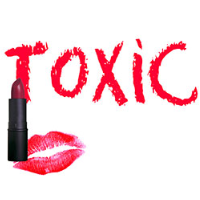New State Cosmetics Database Gives Consumers Bad News about Their Favorite Products

Apparently, the next best thing to testing a product suspected of being unsafe is to tell the public all the bad things about its chemical composition and let them pressure the manufacturer to cut it out.
The California Department of Public Health (CDPH) unveiled a new database Friday that lets people look up their favorite cosmetic products and see what dangerous or suspicious chemicals they might be smearing or spraying on themselves.
For instance, if you’re addicted to Revlon’s Age Defying All Day Concealer–Neutral, you might be interested to know it contains titanium dioxide. Also known as titanium white and pigment white, the chemical made the states’ Proposition 65 list of chemicals known to cause cancer or birth defects. Indications are that product users are safe as long as they don’t breathe or ingest the concealer, but rats that did got cancer. The chemical is used to give the product a white color and thicker texture.
Titanium oxide is very popular among cosmetic companies. A search of the database found 327 “companies/brands” used it in 40,469 products in 87 categories. Butylated hydroxyanisole is another popular chemical, although not nearly as prominent. The synthetic chemical, which is added as an antioxidant and preservative to lipsticks and eye shadows, caused tumors in rats and mice and can be absorbed through the skin. It is in Cover Girl Marathon Mascara and 1,049 other products made by 50 companies.
A database search also turns up a mention of “Trade Secret” as one of the components in many products. The database website helpfully informs that “the term ‘trade secret’ refers to information not generally known to the public, which gives the holder of the information some sort of economic benefit.”
Indeed. Go on. “If ‘trade secret’ is listed as an ingredient for a product on this website, it means that one or more ingredients have been reported as a known or suspected carcinogen or reproductive/developmental toxin, but that the reporting company has elected to designate the information as ‘trade secret.’ ”
Twenty-two companies/brands in the database list “Trade Secrets” as their sole ingredient in 1,456 products in 46 categories.
The database comes to the public courtesy of the 2005 California Safe Cosmetics Act (pdf). The act requires the producer and/or distributor to give the state a list of all cosmetic products with ingredients known or suspected of causing cancer or reproductive harm. The database currently contains 857 chemicals (pdf) and can be searched by product, category, company or chemical.
The Public Health Department is quick to point out that just because a product is in the database doesn’t mean it has been found to be unsafe or is unsafe.
–Ken Broder
To Learn More:
State Unveils Public Website to Expose Harmful Cosmetics (by Heather Somerville, Santa Cruz Sentinel)
California Safe Cosmetics Program Product Database (California Department of Public Health)
Beware of Lead in Lipstick . . . Especially Maybelline’s Pink Petal (by Noel Brinkerhoff, AllGov)
- Top Stories
- Controversies
- Where is the Money Going?
- California and the Nation
- Appointments and Resignations
- Unusual News
- Latest News
- California Forbids U.S. Immigration Agents from Pretending to be Police
- California Lawmakers Urged to Strip “Self-Dealing” Tax Board of Its Duties
- Big Oil’s Grip on California
- Santa Cruz Police See Homeland Security Betrayal in Use of Gang Roundup as Cover for Immigration Raid
- Oil Companies Face Deadline to Stop Polluting California Groundwater





